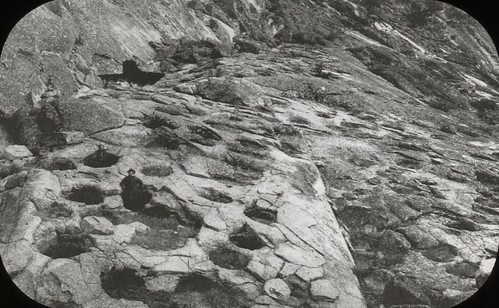@webo
catastrophe vs. gradualism
That's the $64,000 question isn't it? From what I see in my area, it is catastrophe, the mechanisms and timelines put forward by geologists don't make sense to me.
The document linked to by seasmith has some interesting info. I'd been wondering, with simulations, how they determine the starting landform, as that would have to be correct for the rest of the model to work. They assume a flat landscape raised up by continental lift. Then somewhere on that flat landscape, the first little crack or crevis or slight depression becomes the focus of erosion by water or glacier, and given enough time it cuts a deep V shaped trench. They then use a rate of erosion for the particular type of rock that results in the very long timelines we are presented with. Conditions must have remained constant over millions of years for their models to work, and of course it is easy for them to say that this is what must have happened, because they will not ever consider catastrophe on the scales required for alternative models. And certainly not electrical and plasma catastrophe, that's woo-woo land.
A couple of recent related items:
Researchers link Martian surface "oddities" with subsurface water and impact craters
Investigating extremely detailed images of Mars produced by the High Resolution Imaging Science Experiment (HiRISE) camera – the largest ever carried on a deep space mission – researchers from Western University have discovered further evidence linking subsurface volatiles, such as water or ice, to previously recognized (but thought to be rare) pits, which commonly arise on the floors of Martian impact craters.
http://phys.org/news/2012-07-link-marti ... rface.html
The melted appearance of these features indicates to me a heating from above, not below, and not from an impact. In the document seasmith links to, they also invoke subsurface water and ice to explain many features, and no doubt some features, particularly where there is permafrost, slumping and landslides do occur, but in places where similar looking features are seen in solid rock, how does subsurface water flow explain them?
Hidden Rift Valley Discovered Beneath West Antarctica Reveals New Insight Into Ice Loss
Scientists have discovered a one mile deep rift valley hidden beneath the ice in West Antarctica, which they believe is contributing to ice loss from this part of the continent.
http://www.sciencedaily.com/releases/20 ... 132208.htm
Equivalent to the Grand Canyon in scale, and I'll bet if we could see the shape in detail it would look very much like the GC, scalloped, sharp edges, dendritic ridges, deep V cross sections. The ice and snow is sitting in an electrically excavated canyon, I do believe.
In order to change an existing paradigm you do not struggle to try and change the problematic model. You create a new model and make the old one obsolete. -Buckminster Fuller




